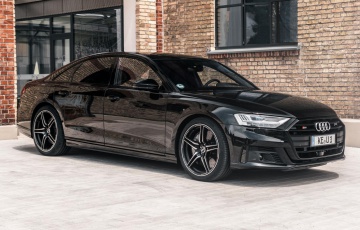What are e-fuels and how are they made?

If upstanding citizens of early ‘90s UK culture The Shamen are to be correctly understood, their hit song was referring to e-methane, e-kerosene and e-methanol, otherwise known as e-fuels.
These fuels, produced from renewable resources, like solar or wind, have come under closer scrutiny recently because Germany might veto new EU ‘all-electric by 2035’ legislation, in favour of keeping e-fuel vehicles exempt from the new measures. The current plan is to switch the whole of Europe onto electric vehicles ASAP.
That made us want to know more about these e-fuels and the discussion around their use, to better understand the for and against argument.
What is meant by e-fuel?
E-fuel is a synthetic version of fossil fuel. Brilliant chemists have broken down the chains of elements that make up coal and gas, chiefly hydrogen and carbon.
Using organic carbon-heavy matter and burning it to make power isn’t sustainable because eventually, albeit not in our lifetimes, the organic matter will run out.
Instead, e-fuels instead are generated by using decarbonised power sources, such as wind, solar or wave.
They can come in gas or liquid form and by advocates, they are considered better for the environment, because the carbon released during application was captured during production.
What is syngas?
Syngas is at the heart of ‘renewable fuels’. It’s a mixture of hydrogen and carbon monoxide.
In a process called ‘gasification’, it can come from biomass, e-fuels or solar fuels. Syngas is turned into a liquid, which then can replace the fossil fuel we use now.
Why don’t we all use synthetic fuels, if they’re so good?
Great question. While being carbon-neutral is all well and good, the amount of energy needed to make syngas is not insignificant.
The three industrial processes can be referred to as ‘biomass-to-liquid’, ‘power-to-liquid’ or ‘sun-to-liquid’.
The main issues with all three is scale and efficiency. As a globe, we use tonnes of fuel.
Biomass requires us to grow plants that then get turned into biofuel.
Critics argue that growing food for industrial fuel when many countries face poverty and hunger is unethical.
It’s true that the fertile land could arguably be put to better use, but splitting hydrogen from water - to get ‘power-to-liquid’ is hella energy-thirsty, too.
Both of these options are seen as indirect processes i.e. something has to be put in to get the energy out.
‘Sun-to-liquid’ might seem the best route, where all countries could benefit - except maybe the countries stuck in the Arctic circle six months of the year.
However, according to the Institute of Electrical and Electronics Engineers (IEEE), solar-to-fuel conversion is maximum seven per cent efficient.
The current realistic objective is to reach 20 per cent efficiency - currently considered optimistic.
What is eFuel made of?
Hydrocarbons - hydrogen and carbon. The process can depend on the route, as described above, but one way is to firstly break down water into hydrogen and oxygen, using renewable electricity (hopefully) and the process of electrolysis, then extract the hydrogen.
In the second step, a mixture of hydrogen and carbon monoxide - creating the all-important syngas - is put through, for example, the Fischer-Tropsch process, which turns the syngas - via a series of chemical reactions - into liquid hydrocarbons. That’s the Chemistry 101 version, anyway.
So could we avoid running an electric vehicle by using an e-fuel car?
That's what Germany reckons, at least for some supercars.
Porsche has a stake in an e-fuel business. However, other industry bods say it'll be too expensive to run cars on e-fuels and they'd have greater successful application within aviation.
Car makers have been banging on about using hydrogen for the best part of four decades, and that still has yet to happen, so if that's anything to go by, those bods might be right. Time will tell. Meanwhile, the EV juggernaut rumbles on.
We hope that helped.
STORY Cat Dow









